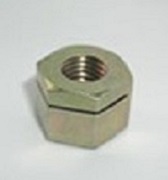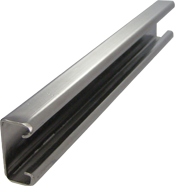
What is the difference between 3and 3stainless? Which is better 3or 3stainless steel? What are the properties of 3stainless steel? Due to the addition of Molybdenum (Mo), SS3has a great improvement in corrosion resistance and certain properties.
It has excellent forming and welding characteristics. It is readily brake or roll formed into a. Marine-grade stainless steel , called type 3, is resistant to certain types of corrosive environments. There is a variety of different types of 3stainless steel. Some common types are the L, F, N, and H variants.
Each is slightly different, and each is used for different purposes. Stainless Steel EN 1. The resultant composition of CS 3gives the steel much increased corro. This is particularly apparent for pitting and crevice corrosion in chloride environments.
Type 3: The second most common austenitic stainless steel is Type 316. The addition of molybdenum provides greater resistance to acids and to localized corrosion caused by chloride ions. Low-carbon versions, such as 316L or 304L, have carbon contents below 0. Judging by the name, you might assume that stainless steel never stains—but you’d be wrong. Also known as marine grade stainless steel due to its increased resistance to chloride corrosion compared to type 304. L is an extra low carbon grade of 3, generally used in stainless steel watches.
The added molybdenum makes the metal more resistant to pitting and corrosion, as well as improving resistance when exposed to elevated temperatures. This grade of stainless steel is particularly effective when used in acidic environments. The role of the titanium alloy addition is discussed and is compared with the alternative low carbon 3types.
Other common applications of 3stainless steel include: Chemical processing and storage equipment. Two of the more commonly used grades of austenitic stainless steel are grades 3and 316. To help you determine which grade is right for your project, this blog will examine the difference between 3and 3stainless steel. We also stock specialist products, non-standard sizes and offer our quick turnaround polishing service to both our commercial and domestic customers.
Grades include: 3and 304. Type 3is an austenitic stainless steel with added molybdenum which gives the alloy improved corrosion resistance. It is commercially almost as popular as 304. The mechanical properties of the alloy are similar to Type 3except that this grade is stronger at elevated temperatures.

It falls under the umbrella of Austenitic steel category, which includes specialty alloys, manganese-chromium-nickel-nitrogen alloys, and common chromium-nickel alloys. Both had a molybdenum content in the range of 2. Coated Carbide Endmills. High Speed Steel Drills (HSS) Tool Diameter (inches) Surface Speed (SFM) Cutting Feed (IPR) With Carbide drills always check the manufacturers recomendation on what drilling.
The main difference between 3and 316L stainless steel is the level of carbon content, weldability, corrosion resistance and mechanical properties. The 3family is a group of austenitic stainless steels with superior corrosion resistance to 3stainless steel. This alloy is suitable for welding because it has a carbon content lower than 3to 3series alloys to avoid carbide precipitation in welding applications. L stainless steel stockholders and suppliers, delivering to the whole of the UK. This grade is a chromium nickel molybdenum austenitic grade which is suitable for use in severely corrosive conditions.
The addition of molybdenum gives it a better corrosion resistance than other austenitic stainless steel grades such as 304. The presence of molybdenum gves this stainless steel better overall corrosion resistance properties than types 3and 3stainless steel. Type 3gives useful service at room temperature in sulphuric acid of concentrations lower than wt.
It also resist chloride attack and is often used in. After grade 3stainless steel, grade 3is perhaps the most commonly used. The substance contains molybdenum, which lends the product extra resistance to corrosion and oxidisation.
This makes it particularly attractive to those looking to use the product in chloride or marine environments.
Žádné komentáře:
Okomentovat
Poznámka: Komentáře mohou přidávat pouze členové tohoto blogu.